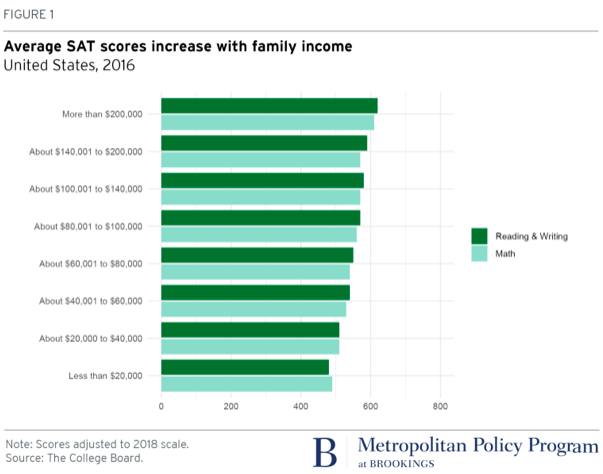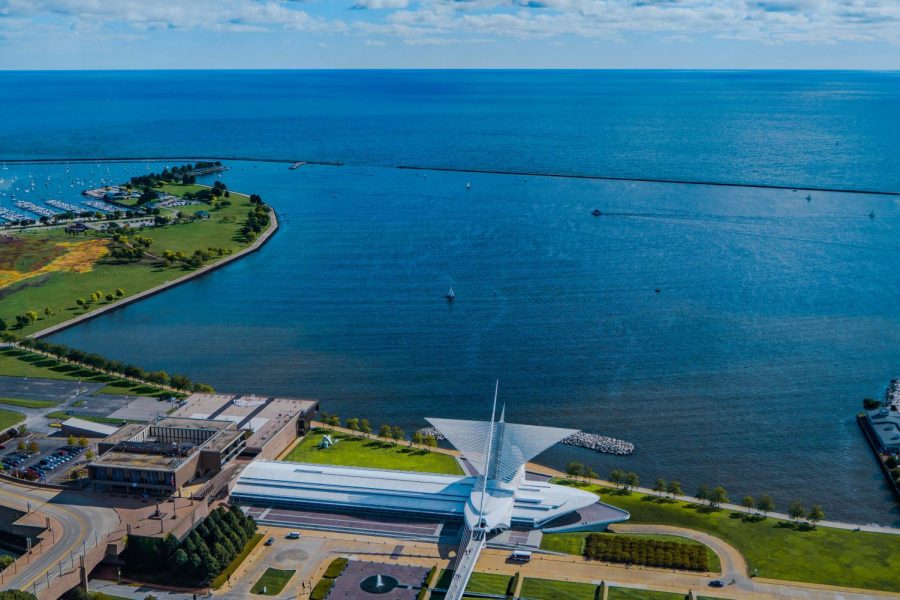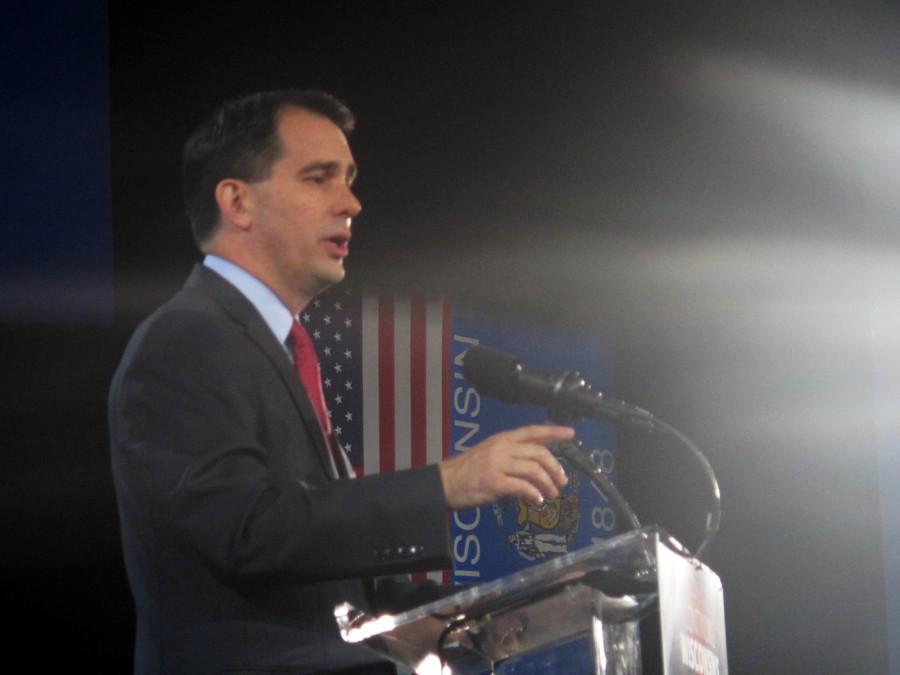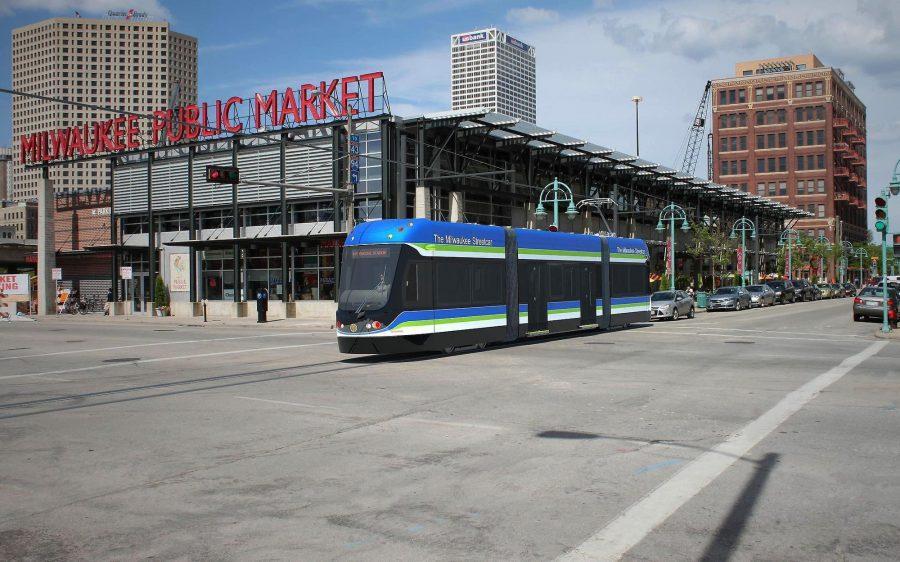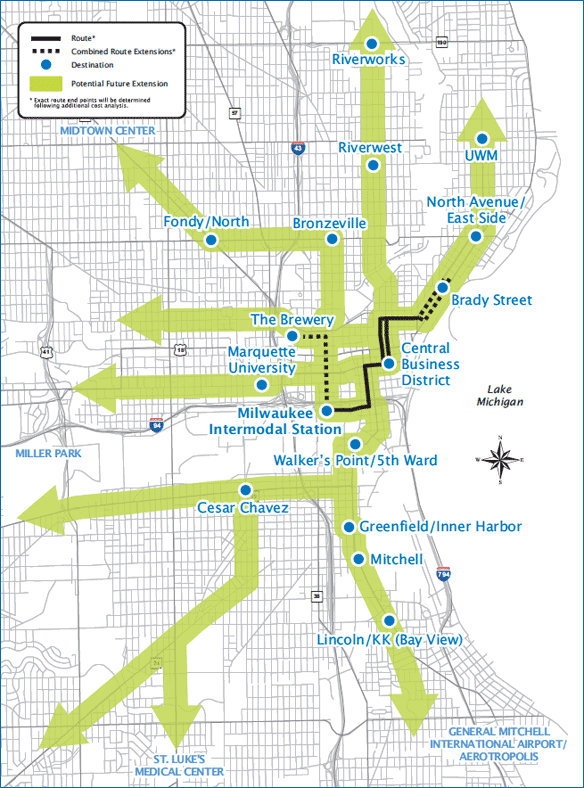Milwaukee welcomed The Hop, the city’s first streetcar since the 1950s, Nov. 2 during a weekend-long grand opening event, where city officials including Milwaukee Mayor Tom Barrett and Congresswoman Gwen Moore introduced the new transit system.
The construction of The Hop began in early 2017 and was completed in June.
“The Hop is definitely a game changer for Milwaukee,” said Beth Weirick, CEO of Milwaukee Downtown Business Improvement District 21. “Every single business that operates downtown, every person that lives or works downtown and everyone who visits our fabulous city from near or far will benefit from The Hop.”
At the downtown bid, an organization that works to support the downtown Milwaukee business community, Weirick said members are working to help grow Milwaukee culturally and economically.
The Hop runs approximately four miles, with 18 accessible stops in between. Riders can stop in the Historic Third Ward, Cathedral Square Park and can get close to Walker’s Point at the farthest intermodal station.
To build The Hop, Milwaukee allocated $55 million through the U.S. Department of Transportation. According to its website, the funds designated by Congress are exclusively for building a fixed-rail system. The money allocated cannot be used for any other purpose, like the Milwaukee County Bus System, fixing potholes or providing other maintenance around the city; the funds can only be used for a rail system.
“If the money is not used for the streetcar, it would go to another city for fixed-rail transits,” the website said. “The City understands the value of investing in infrastructure to compete in the 21st century. Cities across the U.S. are progressing by adding multi-modal transportation choices for their residents, visitors and workers.”
Additional federal funds related to the project were used to expand MCTS. A $36.6 million grant given to Milwaukee County around the same time the federal transit grant was given for the streetcar allowed for the purchase of new buses, according to the site.
“This is not your grandparents’ streetcar,” Barrett said. “You’ll find it smooth, quiet and accessible to everyone no matter their abilities or their age.”
Barrett said it is important to point out that before service starts, the city has already seen benefits from the streetcar, including investments and an abundance of jobs.
“The streetcar is a significant factor in downtown vibrancy and (the) incredible renaissance that this portion of our community is experiencing right now,” Barrett said.
The streetcar will also provide free rides for the entire first year, thanks to the Potawatomi Hotel and Casino.
“Potawatomi’s support and sponsorship is an investment in our city and its future,” Weirick said. “Their commitment sends a strong message to the community that Milwaukee is a city on the rise.”
CEO of Potawatomi Hotel and Casino Rodney Ferguson said Potawatomi is thrilled to be a part of this occasion and proud that the investment will allow riders to enjoy this service for free during its first year of service.
“It’s time to live, work and play in the City of Milwaukee,” Ferguson said. “These past few weeks have shown us all what a fantastic community we live in. A community with a collaborative eye (that) focuses on a bright, bright future. The Hop promises to transport our city residents, workers and visitors to where we want to go, when we need to be.”
Ferguson also said that on a broader scale, The Hop will put the Milwaukee community to the forefront of city advancement.
“I’m already hearing the question I’ve anticipated, ‘When is the streetcar coming to my neighborhood?’” Barrett said. “My answer? As soon as we can get it there.”
Barrett said the goal is to extend The Hop from the north to the south, and ultimately the west as well.
The new Lakefront extension is fully funded and set to open in late 2020.


